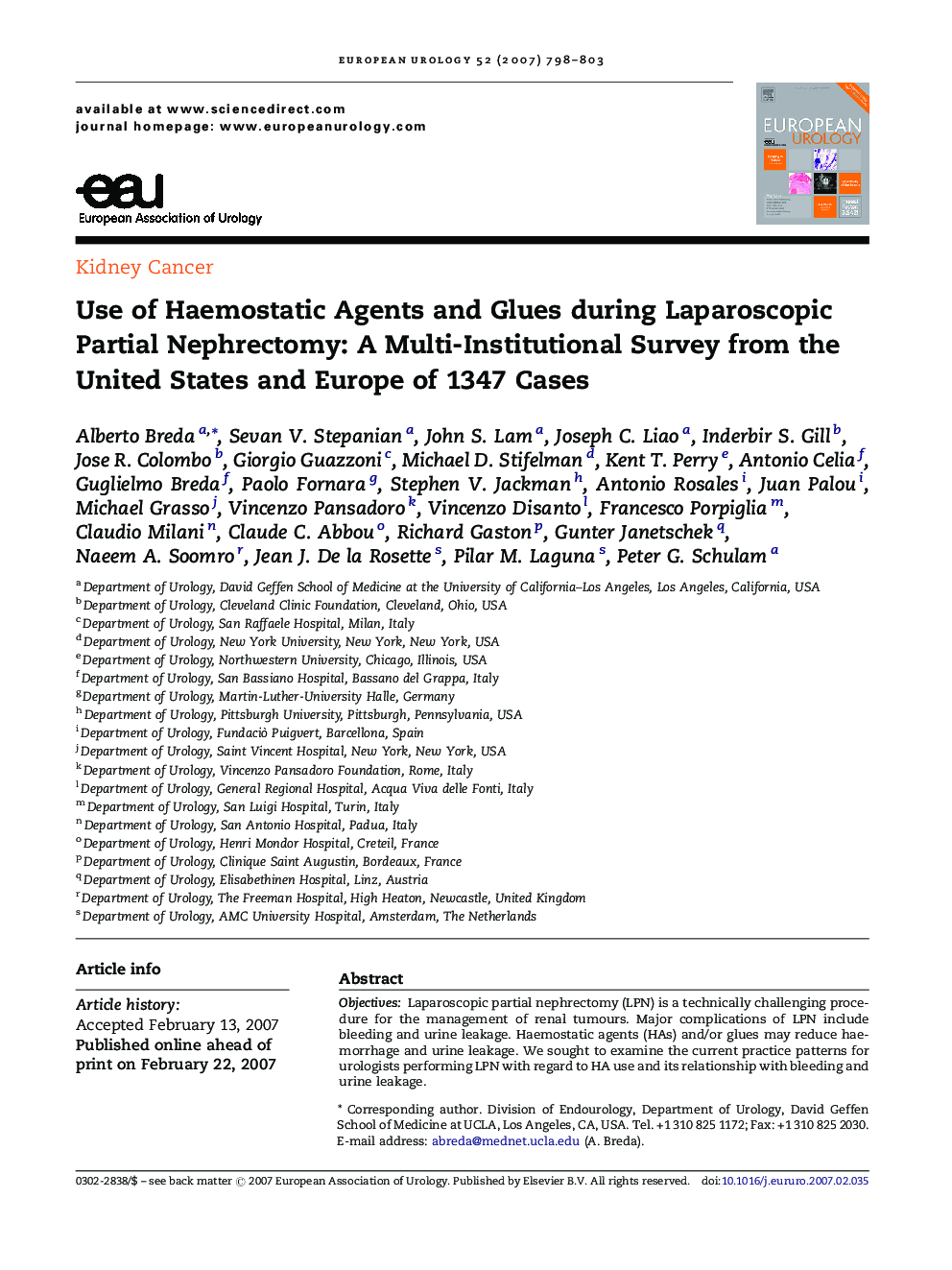| Article ID | Journal | Published Year | Pages | File Type |
|---|---|---|---|---|
| 3926074 | European Urology | 2007 | 6 Pages |
ObjectivesLaparoscopic partial nephrectomy (LPN) is a technically challenging procedure for the management of renal tumours. Major complications of LPN include bleeding and urine leakage. Haemostatic agents (HAs) and/or glues may reduce haemorrhage and urine leakage. We sought to examine the current practice patterns for urologists performing LPN with regard to HA use and its relationship with bleeding and urine leakage.Materials and methodsA survey was sent via e-mail to urologists currently performing LPN in centres in the United States and Europe. We queried the indications for HA/glue usage, type of HAs/glues used, and whether concomitant suturing/bolstering was performed. In addition, the total number of LPNs performed, laparoscopic tools used to resect the tumour, tumour size, and tumour position were queried.ResultsSurveys suitable for analysis were received from 18 centres (n = 1347 cases). HAs and/or glues were used in 1042 (77.4%) cases. Mean tumour size was 2.8 cm, with 79% of the tumours being defined as exophytic and 21% deep. The HAs and glues used included gelatin matrix thrombin (FloSeal), fibrin gel (Tisseel), bovine serum albumin (BioGlue), cyanoacrylate glue (Glubran), oxidized regenerated cellulose (Surgicel), or combinations of these. Sixteen centres performed concomitant suturing/bolstering. The overall postoperative bleeding requiring transfusion and urine leakage rates were 2.7% and 1.9%, respectively.ConclusionsThe use of HAs and/or glues is routine in most centres performing LPN. The overall haemorrhage and urine leakage rates are low following LPN. More studies are needed to assess the potential role of HAs and/or glues in LPN.
